(25th Home) (1963-1986) (1986-1994) (1994-2001) (2001-2005) (2005-2007) (2007-2013)
The Genesis Years
Although 2012 signaled the 25th anniversary for a pair of Ohio’s renowned technology organizations – the Ohio Academic Resources Network and the Ohio Supercomputer Center – the genesis of these groups, the staffs and their many accomplishments began much earlier. The histories of these organizations are so intertwined, that it would be a disservice to create independent recounting; thus, the following is a compilation of their combined story.
Charles Csuri and CGRG
In 1963, Charles “Chuck” Csuri, a college championship football player, World War II Bronze Star winner, accomplished painter and professor in the Art Department at The Ohio State University, began to ponder the potential of computers as an artistic tool. In 1967, he created his iconic Sine Curve Man, using a mainframe computer and an IBM plotter. That same year, he also produced one of the first computer-animated artworks, Hummingbird, on 16mm film, which was purchased the following year by the Museum of Modern Art for its permanent collection.

In 1971, Csuri was awarded an NSF grant for Software and Hardware Requirements for Real Time Film Animation, and OSU provided matching support. Csuri went on to earn additional grants to study the role of the computer and software for research and education in the visual arts. In 1972, he established the Computer Graphics Research Group “to do advanced training and research on computer graphics animation and imaging techniques,” according to science reporter David Lore of the Columbus Dispatch in January 1987. The staff included faculty and graduate students from a broad range of disciplines: art, industrial design, photography and cinema, computer and information science (now CSE), and mathematics.
CGRG was first housed at 1314 Kinnear and utilized equipment provided by the OSU Instruction and Research Computer Center (IRCC): a 32K IBM 1130 computer interfaced to an IBM 2250 Model IV graphics display, and the FORTRAN programming language. It was later moved to the Baker Systems building, 1501 Neil Avenue, where Csuri and Bob Dixon were its primary users. Dixon used the computer for astronomical research projects. In 1972, CGRG installed a new 48K word PDP-11/45 computer and a Vector General graphics display with 3-D hardware transformation capabilities.
Initial Developments at CGRG
With the facilities and equipment in place, CGRG staff and students began working in earnest. In 1972, graduate student Tom DeFanti developed the animation language Graphics Symbiosis System (GRASS), while Gerard Moersdorf helped write a large amount of the code. GRASS was made famous internationally when it was used to create the "Attacking the Death Star will not be easy" animation in the original 1977 Star Wars film.
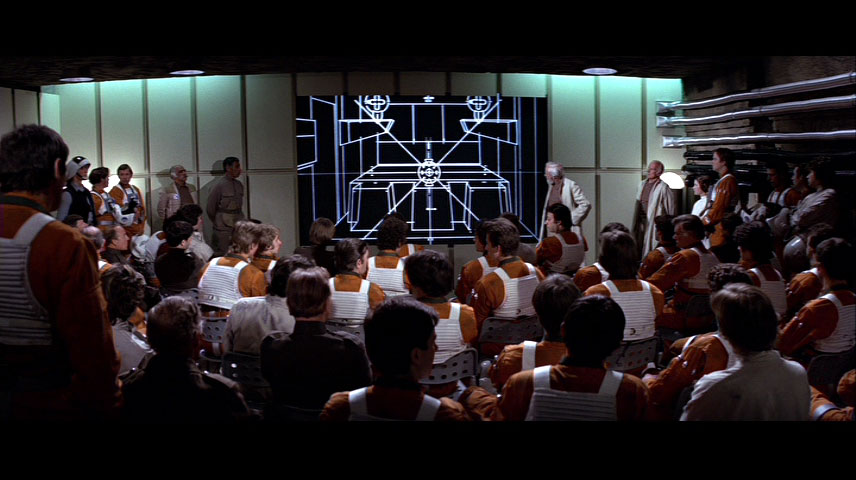
In 1973, graduate student Manfred Knemeyer developed the ANIMA system to define computer-generated motion using an integrated programming language. In 1974, Richard Parent joined CGRG to develop geometric modeling tools for animation. That same year, CGRG’s Mark Gillenson developed a system, known as WhatsIsFace, that used techniques of key frame animation to blend images to create facial drawings – one of the first formal contributions to the technology that is now called “morphing.” In 1975, Csuri contracted with John Staudhammer to build a special “run-length encoding” storage and display device that allowed the move from a strictly vector display environment to raster and color graphics. Also in 1975, Alan Myers studied and developed rendering algorithms (coded in the PDP 11 assembly language) that could run efficiently in the minicomputer environment to make high quality imagery, Ron Hackathorn worked to expand the Anima animation system and Tim Van Hook brought a user perspective to the design of Anima, as well as knowledge of real time issues.
In 1977, CGRG staff presented the ANIMA II animation system at a conference sponsored by the Association for Computing Machinery's Special Interest Group on Computer Graphics and Interactive Techniques (SIGGRAPH), and CGRG’s Bob Reynolds designed a visualization of interacting galaxies, which was shown on the Carl Sagan Cosmos series, which was then updated in 1978 with a complex particle system by Wayne Carlson.
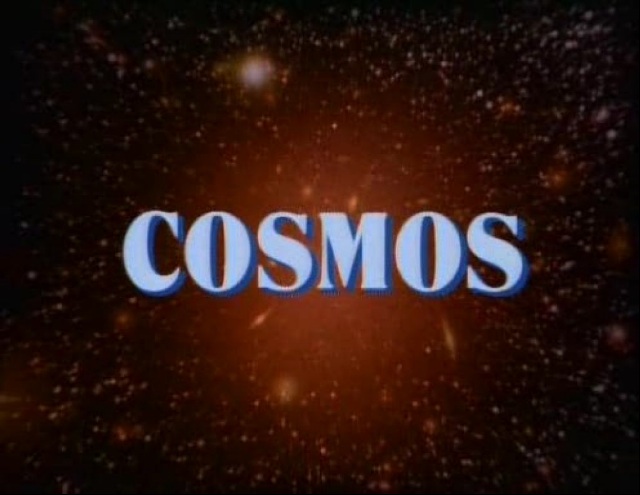
The next year, CGRG created one of the first 3-D computer-generated animations used for a television station – the CBS affiliate WBNS-TV in Columbus, Ohio. Other important work produced during this period included a visualization of interacting galaxies (Bob Reynolds), studies of time in virtual environments (Sam Cardman), the use of CGI in visualizing statistical data (Hal Moellering, Rodger Wilson and Wayne Carlson), the use of animated sequences to help teach language constructs to deaf children (Parent, Hackathorn, Van Hook, Wilson and Carlson), terrain modeling and harbor pilot training simulation (Parent, Wilson and Marshall), and computer art (Csuri, Van Hook and others).
Cranston/Csuri Productions, Inc.
In 1981, Chuck Csuri approached an investor, Robert Kanuth of The Cranston Companies, to transfer the computer animation technology created in the CGRG lab to the commercial world, and Cranston/Csuri Productions, Inc. (CCP) was formed. One of the world's first computer animation production companies, CCP moved, along with CGRG, to a Columbus facility, the former Academy for Contemporary Problems building, at 1501 Neil Avenue in Columbus. This co-location of the two organizations was important to the continuing development of each.
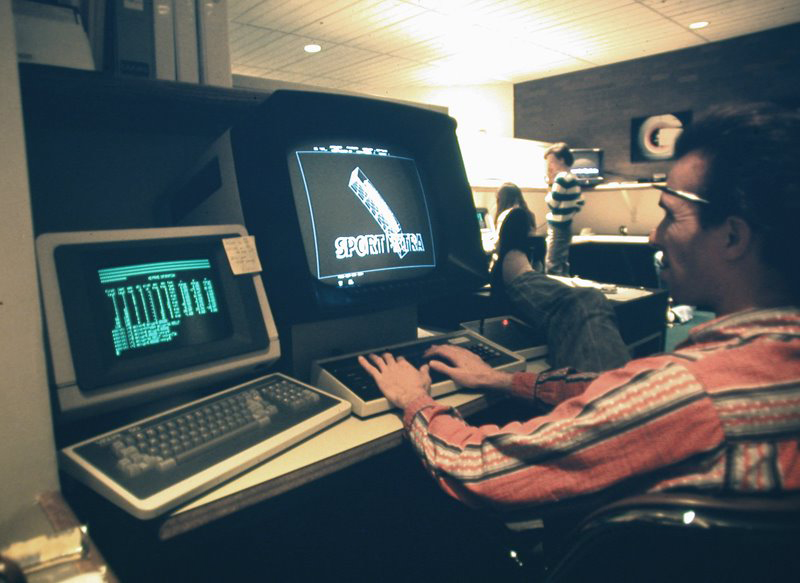
CCP staff rewrote the software that was in the research lab so that it was more user-friendly and less research oriented, and added specialized utilities for character animation, procedural effects, rendering, geometric modeling and post production. This suite of software was used to provide animation for television and advertising until CCP went out of business in late 1987.
Special purpose hardware included the Marc IV custom frame buffers, which were designed and built by CCP employee Marc Howard. These frame buffers provided the ability to do extended low-resolution motion tests that were stored in frame buffer memory and played back in real time. CCP used Vax 11/750s, 11/780s, Pyramid computers, Sun workstations, and a modified Ampex Electronic Still Store (ESS), which was designed for slow motion replay by the television network sports industry. Images were calculated and stored on one of several magnetic disks; the machine was programmable to facilitate the 30fps playback with a direct NTSC video output. CCP also had a Celco 2000 film recorder, which could be used for 16mm and 35mm motion picture film, or 35mm slide or 4x5 transparency still output.
During the seven-year period that they were in business, CCP produced almost 800 animation projects for over 400 clients worldwide. The software was also licensed in 1985 to Japan Computer Graphics Laboratory (JCGL) for use in the Japanese market.
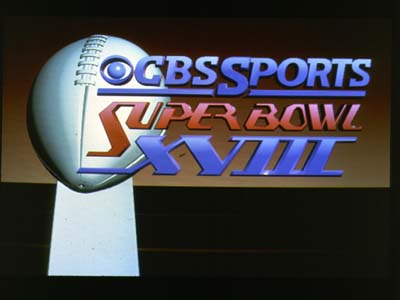
Key projects included: opening graphics for three Super Bowls; the on-air sports promotions for ABC, CBS, NBC, and ESPN networks; news opens and promos for all of ABC's news shows, as well as news opens for CBS, CBN, Fox and PBS; international network promos for ARD (Germany) CBC (Canada) ABC (Australia), Globo (Brazil) and Scottish Television; entertainment graphics for ABC, NBC, CBS, Turner, Showtime, HBO, Fox, and over 100 local affiliates; award winning ads for TRW, Sony, Proctor and Gamble, AEP, G.E., and Dow; music videos for Krokus, Twisted Sister and Chaka Khan; special projects for Goldcrest Films (The Body Machine), CoMap and the Annenberg Foundation (VISUmap animations for “For All Practical Purposes” mathematics telecourse.)
During this period, CCP staff continued to extend the research boundaries and publish new and innovative results. Former staff members included Shaun Ho (SGI), Michael Collery (PDI), Scott Dyer (Nelvana), Jeff Light and John Berton (ILM), Susan Van Baerle, Maria Palazzi (ACCAD), Doug Kingsbury, John Donkin, Pete Carswell (ACCAD), Paul Sidlo (RezN8), Jim Kristoff and Dobbie Schiff (Metrolight), Rick McKee (SGI), Jean Cunningham (PDI), John Townley and Steve Martino (click3west), Tom Longtin and many others.
The software was purchased by Lamb and Company in Minneapolis, and some of the management of CCP moved to Los Angeles to form Metrolight Productions (Jim Kristoff, president) and RezN8 Productions (Paul Sidlo, creative director). Chuck Csuri left CCP in 1985 to return to his OSU duties at CGRG, and Vice President Wayne Carlson took over the presidency of CCP in 1987 in order to see it through Chapter 11 liquidation, and returned as an assistant professor to the OSU Computer Science Department when the company closed. He later became director of ACCAD, chair of the Department of Design and is currently vice provost and dean of Undergraduate Education at Ohio State.

The Advent of Supercomputing at OSU
Over the early 1970s, academia was getting involved with supercomputers. In 1976, engineers at Los Alamos Scientific Laboratory in the mountains north of Albuquerque, N.M., deployed a Cray 1 system, considered by many to be the world's first modern supercomputer. In 1981, the University of Minnesota also installed a Cray 1 system, the first installation of a supercomputer at a university.
Ohio State professors, primarily in chemistry, had been investigating how to increase the computing power in their research.

C. William McCurdy and Russell M. Pitzer already had experience using Cray supercomputer systems from consulting roles at national laboratories. McCurdy’s group was using supercomputer systems to study computer molecular photoionization cross-sections. Pitzer’s group was using them to study the electronic and molecular structures of very heavy atoms. Isaiah “Shi” Shavitt’s group was using supercomputers extensively in very high accuracy studies of electronic and vibrational properties of molecules, and he had co-organized a symposium on Supercomputers in Chemistry, co-editing a resulting book.
In early 1983, OSU officials initiated discussions with NASA’s Lewis Laboratory (now NASA-Glenn) about gaining access to their supercomputer. The laboratory’s earliest role for NASA was to stimulate innovation in engine design, but by this time the lab was developing propulsion and electrical systems for the Space Shuttle and Space Station Freedom. By the end of the year, NASA Lewis facilities were made available at no charge on an evening and weekend basis for several OSU research groups. However, the output from the NASA system could only be received by 1200-baud dial-up connections or on paper through the federal mail system.

 The following spring, the National Science Foundation (NSF) announced a program to give researchers temporary access to its existing supercomputer centers. A number of OSU research groups in chemistry, civil engineering, geodetic science, physics and metallurgical engineering received NSF grants for time on a Cray 1 system run by Boeing Computer Services in Seattle. The OSU group led by Pitzer, with help from Al Stutz and others, proposed to NSF that the Instruction and Research Computer Center at OSU establish a connection with BITNET, the existing international academic computer network, to Boeing Computer Services so that all U.S. academic users of the Cray 1 in Seattle could send input and receive output at 9.6 kilobaud. This proposal was funded at $30,000 and the connection was implemented.
The following spring, the National Science Foundation (NSF) announced a program to give researchers temporary access to its existing supercomputer centers. A number of OSU research groups in chemistry, civil engineering, geodetic science, physics and metallurgical engineering received NSF grants for time on a Cray 1 system run by Boeing Computer Services in Seattle. The OSU group led by Pitzer, with help from Al Stutz and others, proposed to NSF that the Instruction and Research Computer Center at OSU establish a connection with BITNET, the existing international academic computer network, to Boeing Computer Services so that all U.S. academic users of the Cray 1 in Seattle could send input and receive output at 9.6 kilobaud. This proposal was funded at $30,000 and the connection was implemented.
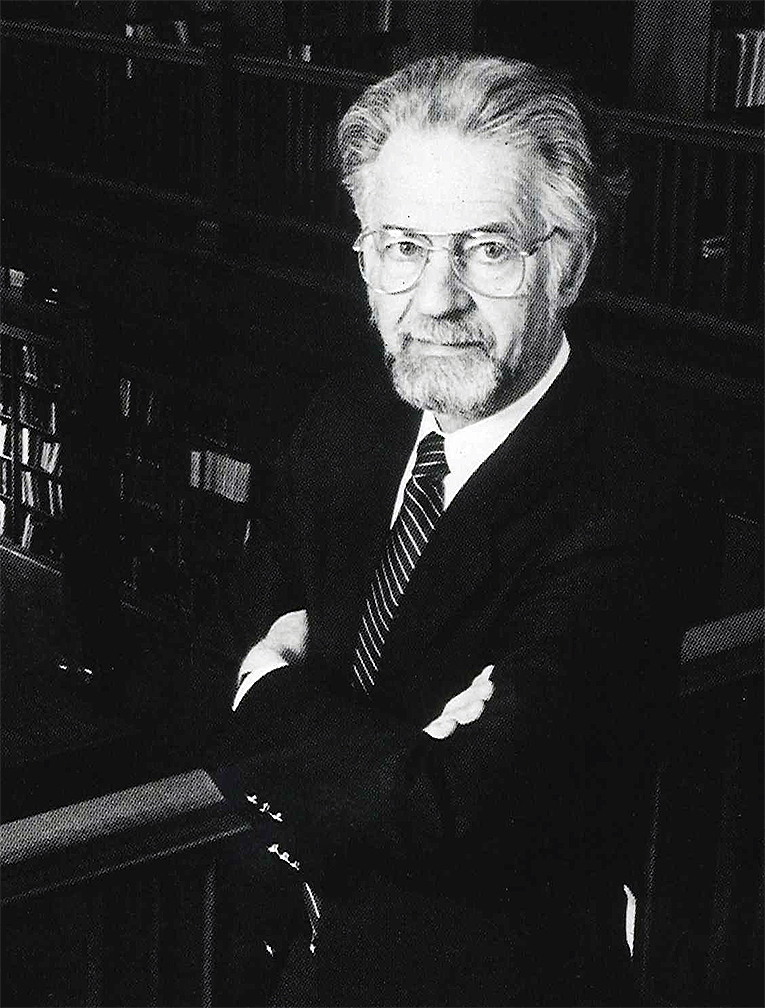
Perservering Through Funding Setbacks
Also in 1984, Congress gave NSF $40 million for a program to establish university-based supercomputer centers, and in August, NSF released an RFP for three national supercomputer centers. Upon hearing news of the upcoming program, Ohio State Vice President for Research and Graduate Studies Jack Hollander met with Pitzer, Shavitt, McCurdy and Tom Sweeney, OSU Assistant Vice President for Research and Graduate Studies, to discuss the potential of securing a supercomputer for OSU through this program.
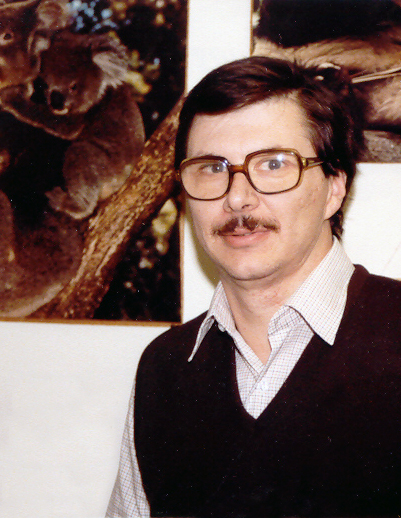
Following their initial conversations, Hollander appointed a committee to investigate the opportunity. The committee included McCurdy (chair), Shavitt, Pitzer, Csuri, John Heimaster, Bob Dixon and Junko Shigemitsu, while Chuck Sechler, Michael Fidler and Al Stutz also made contributions. Over the summer months, McCurdy, Shavitt and Pitzer began writing began writing a proposal for a supercomputer at OSU.
“[Supercomputers] catalyzed a revolution in national laboratories and had begun to be purchased by industry,” McCurdy explained in a 1989 Ohio Magazine article. “As one of those scientists whose research survives or fails based on this kind of computational research, it became clear to me that unless I could persuade the university of the state to get this kind of computer, I would be in a backwater. I made a decision either to get involved (in procuring one) or to leave in two years.”
On Oct. 1, 1984, a committee that included Shavitt (chair), Heimaster, McCurdy, Pitzer, C. Lawrence Cooper, Robert S. Dixon and Martin B. Solomon submitted to NSF a $44.307 million bid for The Ohio State University National Center for Advanced Scientific Computing.
“The Center would provide scientific and engineering researchers throughout the nation with access to a high-speed Class VI ‘supercomputer,’ as well as the peripheral equipment and support services necessary to help users take full advantage of the facility,” according to the proposal’s executive summary. “The facility itself, as proposed, will offer an extremely powerful, but at the same time stable and mature, computational environment for users. The central feature of the Center will be a Cray X-MP/24 dual-processor computer with 4 million words of internal memory, supplemented by a 128-million-word solid-state storage device and eight 1200-megabyte disk drives. … The Center will provide national communications links, at no cost to users, over 96 1200-baud lines, 25 9.6-kilobaud lines, and 10 56-kilobaud lines.”
In December, a revision to the October proposal was submitted to NSF, increasing the matching funds from $5 million to $25 million and took the total budget from $44 million over five years to $68 million over five years.
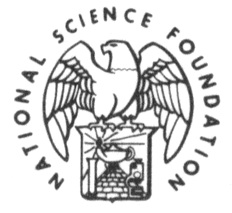 Several months later, the committee members were informed that NSF had declined the bid. “Several factors are considered in evaluating each proposal submitted to the Foundation,” the rejection letter explained. “Of these, scientific merit is the most important. Other factors of importance include the relations of the proposed research to other research in the area and the distribution of funds among the various areas of the science involved.” Several of the peer-review evaluations gave Ohio State only fair or good grades for the university’s lack of prior experience with such powerful systems, the perceived lack of leading research among identified potential users and the limited geographic impact of a center with such a strong Ohio focus.
Several months later, the committee members were informed that NSF had declined the bid. “Several factors are considered in evaluating each proposal submitted to the Foundation,” the rejection letter explained. “Of these, scientific merit is the most important. Other factors of importance include the relations of the proposed research to other research in the area and the distribution of funds among the various areas of the science involved.” Several of the peer-review evaluations gave Ohio State only fair or good grades for the university’s lack of prior experience with such powerful systems, the perceived lack of leading research among identified potential users and the limited geographic impact of a center with such a strong Ohio focus.
NSF funding for supercomputer centers went instead to Cornell University, Princeton University, the University of Illinois and the University of California at San Diego. A year later, a fifth center would be funded at Carnegie-Mellon University in Pittsburgh in Pittsburgh, and the Princeton center was subsequently closed.
 Undaunted, OSU held its first supercomputer workshop in April 1985. Also that spring, OSU officials created an ad hoc Supercomputer Committee to seek a supercomputing facility at OSU and prepared a new NSF proposal based on OSU’s strength in supercomputer training and computer graphics. That summer, the committee delivered a benchmarking report on IBM, Cray and Fujitsu supercomputer systems that might be considered for an OSU facility. NSF funding would allow an Ohio State connection to ARPAnet, the Advanced Research Projects Agency Network run by the Department of Defense that would evolve to help create the backbone of today’s Internet.
Undaunted, OSU held its first supercomputer workshop in April 1985. Also that spring, OSU officials created an ad hoc Supercomputer Committee to seek a supercomputing facility at OSU and prepared a new NSF proposal based on OSU’s strength in supercomputer training and computer graphics. That summer, the committee delivered a benchmarking report on IBM, Cray and Fujitsu supercomputer systems that might be considered for an OSU facility. NSF funding would allow an Ohio State connection to ARPAnet, the Advanced Research Projects Agency Network run by the Department of Defense that would evolve to help create the backbone of today’s Internet.
In February 1986, OSU officials were informed that the NSF proposal for OSU training and graphics was declined, except that they were interested in the graphics section of the proposal, if it could be revised. About this same time, Cranston-Csuri Productions licensed its animation software to Japan Computer Graphics Laboratory, and Csuri left CCP to return to CGRG. Wayne Carlson remained with CCP for a time to guide it through bankruptcy proceedings.
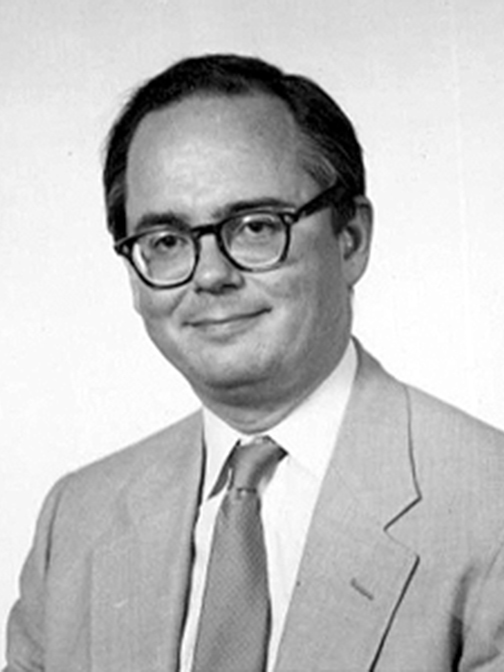
Pitzer, Stutz, and Cooper began giving quarterly supercomputer workshops to encourage OSU research groups to use the available supercomputer centers and to describe the OSU training that was available. Users were advised to use the Boeing center until it closed in April, and the Pittsburgh center thereafter because of the superior communications to these centers. Heimaster had led an effort to provide an especially good BITNET connection to Pittsburgh.
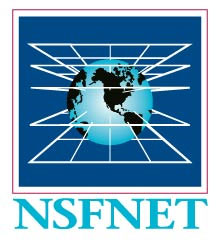 OARnet originally was connected to BITNET (NJE protocol) and CCnet (DECnet protocol). It took another year to be connected to the NSFNET (TCP/IP protocol), which later developed into the Internet. All of these protocols were compatible. Once the NSFNET started expanding rapidly, the other protocols were effectively phased out without causing problems to the users.
OARnet originally was connected to BITNET (NJE protocol) and CCnet (DECnet protocol). It took another year to be connected to the NSFNET (TCP/IP protocol), which later developed into the Internet. All of these protocols were compatible. Once the NSFNET started expanding rapidly, the other protocols were effectively phased out without causing problems to the users.
By this time other OSU research groups were using supercomputing to enhance and broaden their work. Richard Rapp's group was analyzing geodetic science data more extensively and accurately. Gideon Fraenkel's group was calculating conformation properties of organic molecules containing other elements such as silicon and lithium. Robert Wagoner's group was using metallurgical engineering software to simulate metal-forming procedures. Jim Scott's group was simulating the airflow over airplanes. Terry Miller's group was using chemistry software to simulate and assign extensive laser spectroscopic data. John Rayner, Geography Department, was now able to do much more extensive and accurate meteorological studies. Junko Shigemitsu, Physics Department, greatly enhanced the scope of her Lattice Gauge Theory calculations. Graduate students Melanie Pepper and Don Comeau, both working with Shavitt, were providing campus-wide supercomputer training and consulting.

The Need for Ohio's Supercomputer Center
Csuri revised the computer graphics part of the previous proposal and submitted it to NSF in April. In July, Csuri and others organized the Advanced Computing Center for Art and Design at OSU, while permanent funding had yet to be identified. Later in the year, OSU received a $700,000 NSF grant to fund the creation of ACCAD.

In July, State Representative Patrick Sweeney contacted Chancellor William B. Coulter of the Board of Regents (BOR), who then contacted OSU President Edward Jennings about the need for a state supercomputer center, resulting in an evening meeting with the campus supercomputer committee and Elaine Hairston, BOR vice chancellor for academic and special programs. Ohio Governor Richard F. Celeste also supported a plan to establish an Ohio-based/accessible supercomputer.
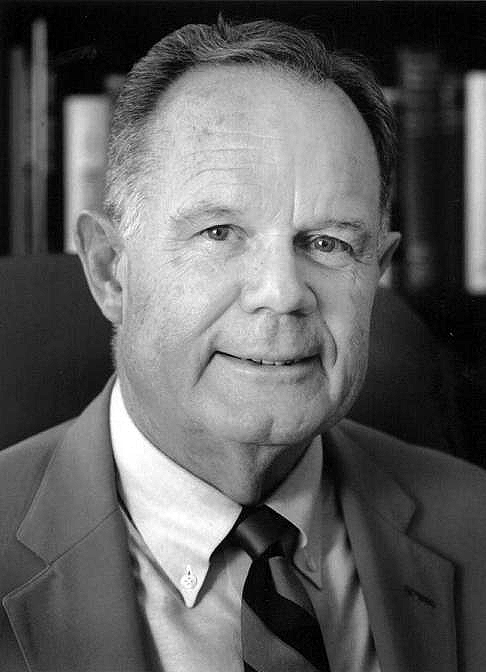
In August, officials completed a proposal to form a statewide supercomputer center. An interim governing board also was created for the Ohio Supercomputer Project (OSP): Ohio University President Charles J. Ping (chair), Jennings, Case Western Reserve University Dean of Science Gilles Klopman, University of Akron President William V. Muse, Medical College of Ohio President Richard D. Ruppert, University of Cincinnati President Joseph A. Steger, Battelle Memorial Institute President Ronald S. Paul, Procter & Gamble Director of Corporate Research Donald J. Peterson, Chancellor Coulter and Hollander. Shortly thereafter, in September, OSU trustees agreed to lease a Cray X-MP supercomputer and have it installed at IRCC. Initially, office space for the center was designated on the ground floor at the south end of McPherson Lab, and McCurdy and Pitzer worked from their regular faculty offices on the second floor of McPherson. Within a few months, activity outgrew the allotted space in the chemistry building, and the board approved the renovation of a facility at 1224 Kinnear Road and directed that the OSC offices be moved temporarily to a building, formerly known as the Research Center, on the north side of Kinnear Road.
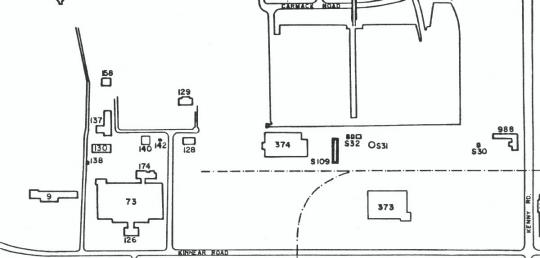
1224 Kinnear Rd.
A working group, consisting of McCurdy, Pitzer, Csuri and Dowell, was created to consider renovation of the Kinnear building. The lease of two buildings at this address, with an option to purchase, had been authorized by the OSU Board of Trustees on Oct. 5, 1984. During a discussion earlier in the same meeting, this building was referred to as the “FMC” building, which is an abbreviation of “Ford Machinery Corporation.” It had been built in the early '50s for Scott Viner, a local canning company. The building that would one day host OARnet and OSC was described as:
“… a one-story, factory building with a steel frame and concrete block exterior walls. Campus Planning records indicate that it has 52,036 sq. ft. of gross area and 47,919 sq. ft. of net assignable area. Drawings prepared by Sims, Cornelius, & Schooley indicate that the building was constructed in the latter half of 1950 for the Scott Viner Co. A concrete block paint room, 24 ft. x 36 ft., was added at an unknown later date at the south end of the east wall.”
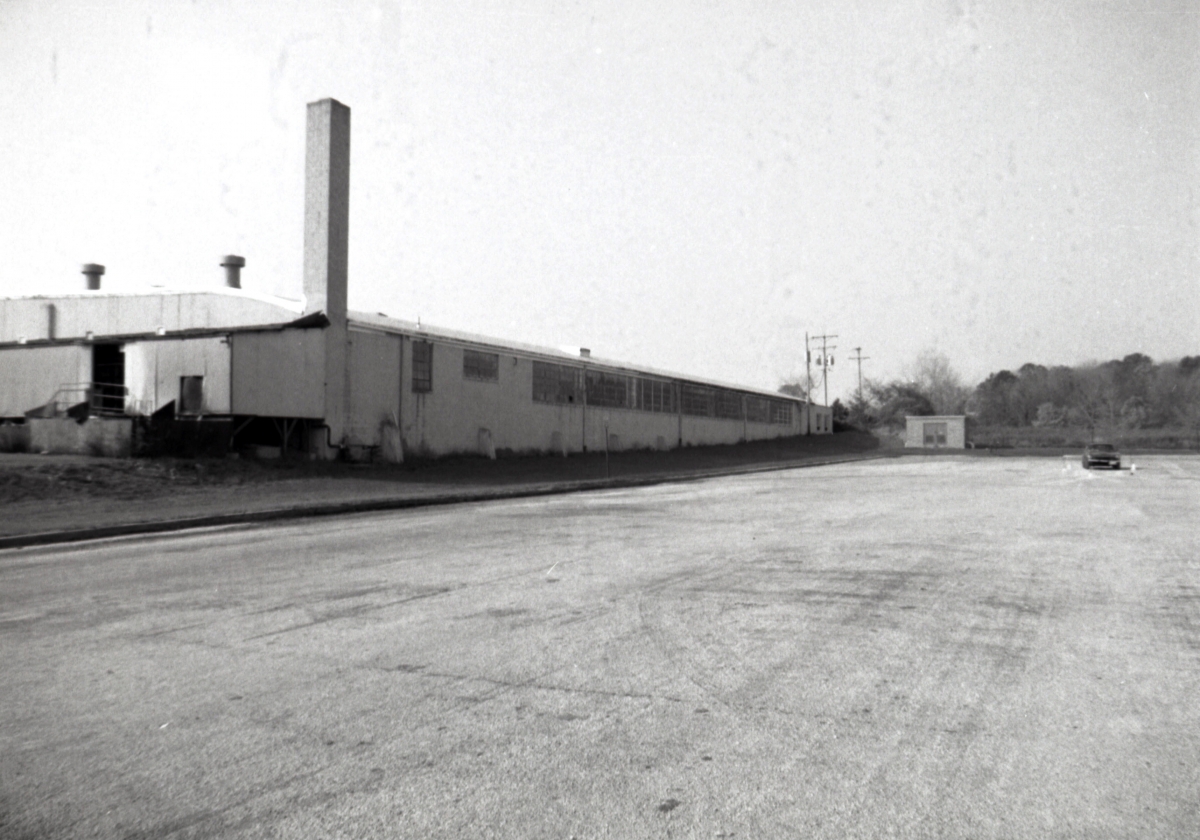
The OSU Board of Trustees would later authorize the purchase of the building, which included just more than three acres of developed land and included a “modern 1 story glass and brick bldg.-excellent condition- approx. 42,000 gsf.” located east of OSU’s research center, the purchase option was $750,000.
In the fall, the state’s Department of Administrative Services added momentum by proposing to provide high-speed data communications to OSC and state universities. In October, General Electric Co. installed a Cray supercomputer in at their jet engine facility in Cincinnati, the third supercomputer to be installed in the state following those at NASA-Lewis and Wright-Patterson Air Force Base near Dayton.
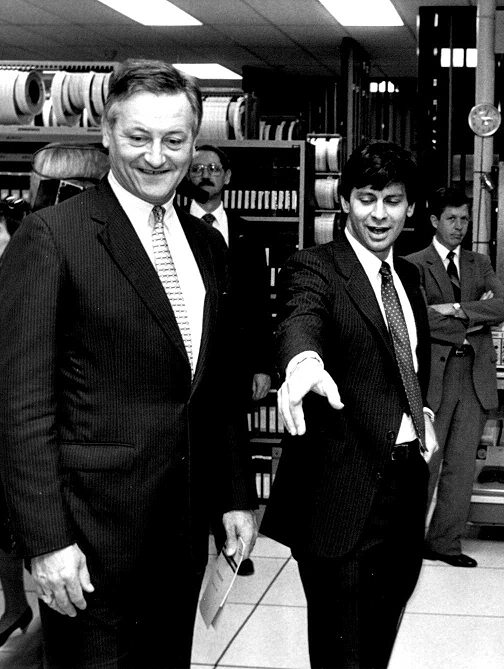
Also that fall, a proposal for a $10 million Ohio Supercomputer Center was included in the OBR biennial budget for 1987-88, and on the OSU campus, OSP officials established a Personnel Subcommittee and named McCurdy OSP acting director, Pitzer associate director and June Stiefel administrative associate of the center.

On Nov. 5, the first official meeting of the statewide Supercomputer Users Group (SUG), chaired by Pitzer, was held at OSU. SUG leaders decided to meet every two months. “Most representatives had not realized how practical and immediate their actual access to the supercomputer will be, with the installation of communications lines next spring, and a great deal of enthusiasm for the statewide university system was generated by the meeting,” Hollander reported.
The OSU Supercomputer Committee and SUG members discussed currently available supercomputers and performed benchmark tests on Cray, IBM and ETA machines, with the Cray performance being clearly superior. The Cray X-MP models had been adopted by most national centers but were scheduled to be replaced by the improved Y-MP models in a year or so. Thus, the agreed-upon plan was to lease an X-MP machine until the Y-MP was available.
On Nov. 18, the first executive briefing on supercomputing for Ohio industries was held at OSU. “In the two weeks following the industry briefing, four industries – SOHIO, Proctor and Gamble, Timken and Battelle – have initiated contacts with us, each expressing an interest in purchasing several hundred hours of supercomputer time with startup in the first year,” noted Hollander.
In December, the Johns Company with the Browne Group Architects submitted the first blueprint plans for configuration of the space at 1224 Kinnear.
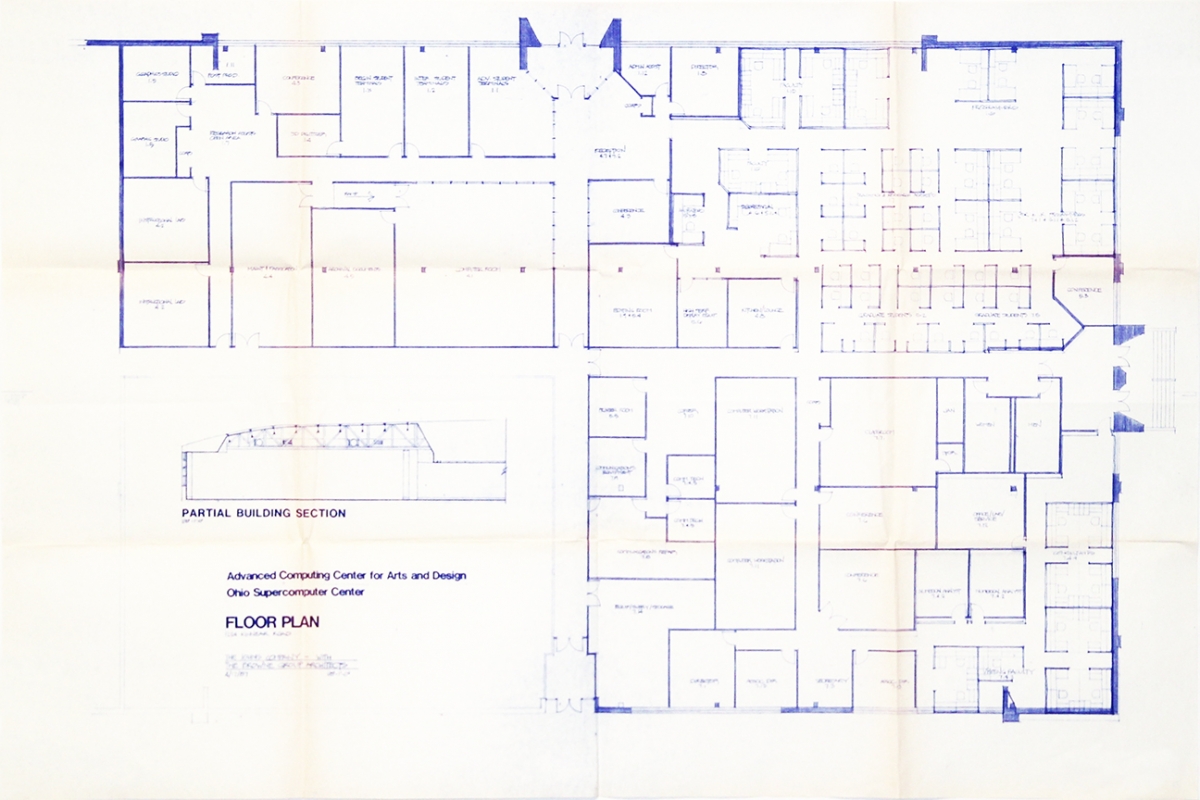
In December, the OSP interim governing board held its first meeting, and DAS officials presented their proposal to the board: If a state university purchases in-state long distance from DAS, the State of Ohio would provide that campus with a 56kb data link.
By this point, it was noted that Ed Overman in mathematics at OSU had extensive Cray experience and George Majda, also at OSU, possessed broad computational interests and experience in mathematical applications. Further outlining the demand, December 1986, Business First article stated, “About two-dozen academic researchers statewide are using supercomputers in other states, primarily in Pittsburgh at Carnegie-Mellon and in Champaign-Urbana at the University of Illinois.”
(25th Home) (1963-1986) (1986-1994) (1994-2001) (2001-2005) (2005-2007) (2007-2013)

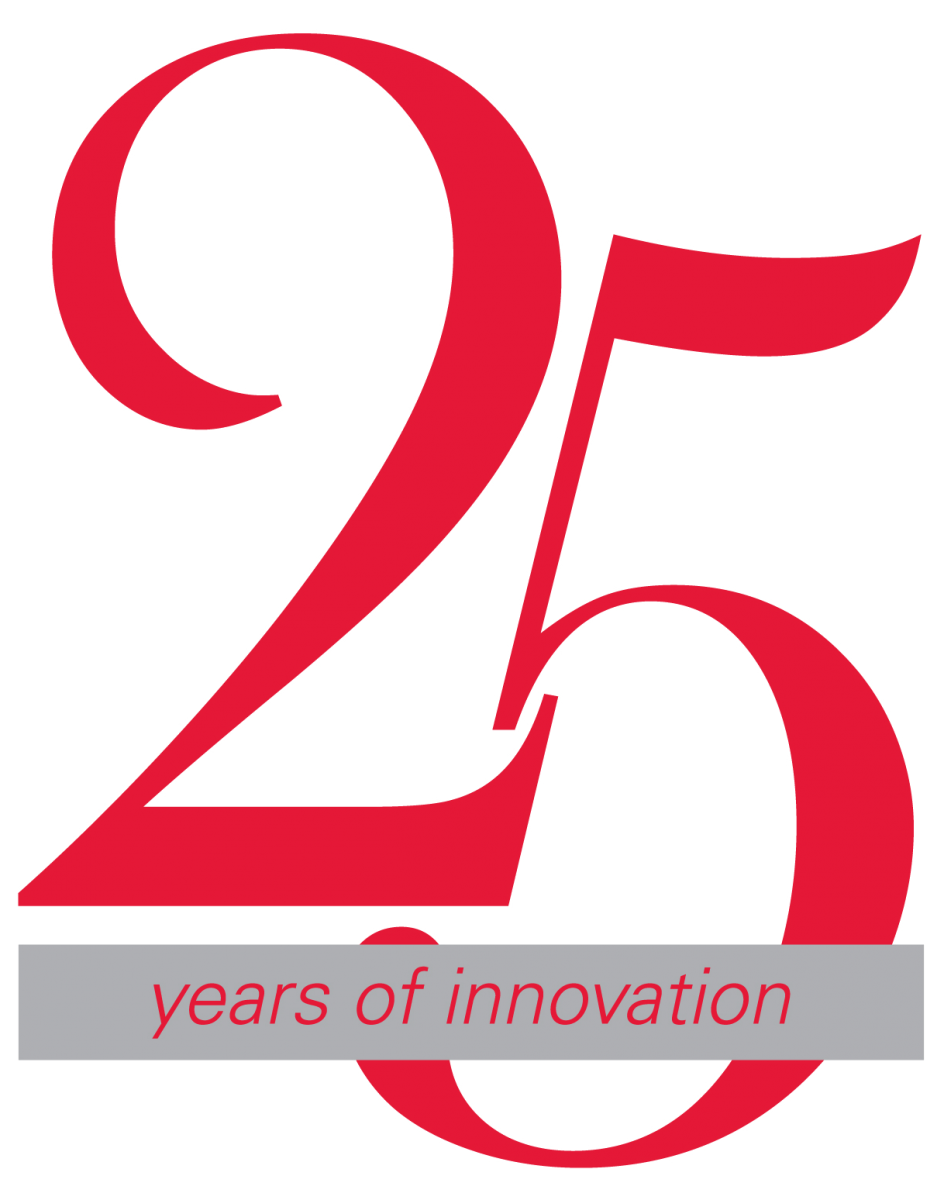
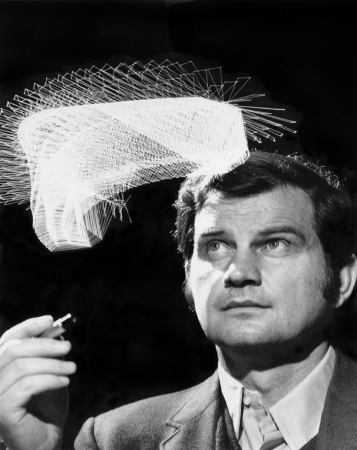
 (December 5)
(December 5)
 (November 18)
(November 18)